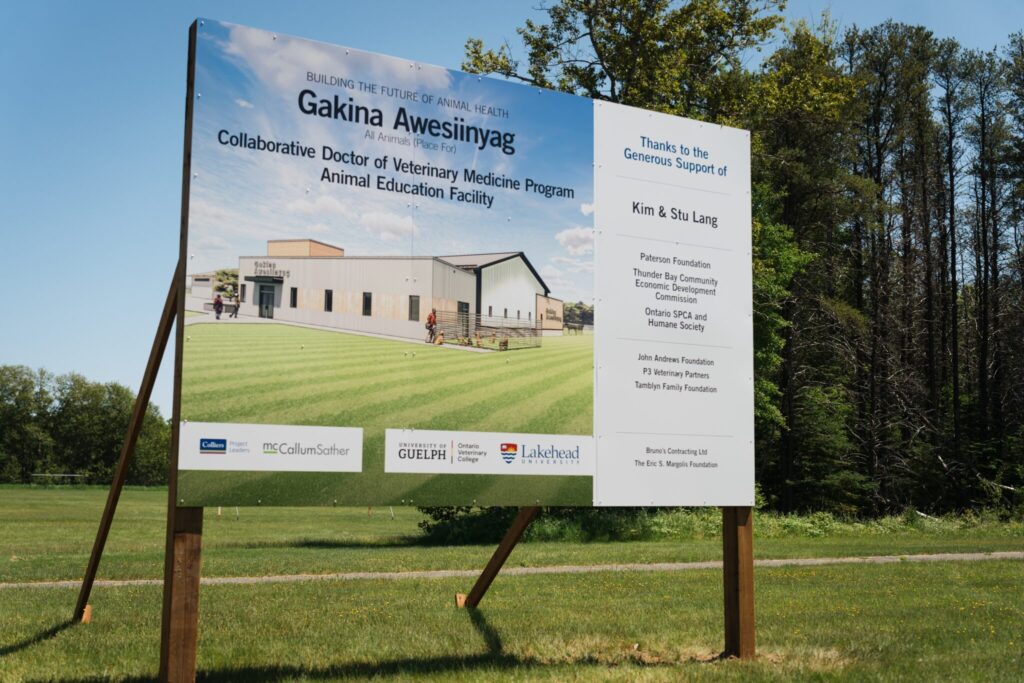New veterinary training facility breaks ground at Lakehead University

Construction is set to begin on a new veterinary education facility at Lakehead University’s Thunder Bay campus, part of a broader effort to address the shortage of veterinarians in northern Ontario. The facility will support the recently launched Collaborative Doctor of Veterinary Medicine Program between Lakehead University and the University of Guelph’s Ontario Veterinary College—Canada’s first veterinary training initiative specifically aimed at students from northern and underserved communities.
The program was developed in response to growing demand for veterinary care across rural, remote, and Indigenous regions, where access remains limited both for livestock and companion animals. It also aims to support the agri-food sector, which continues to expand across the North.
The site was formally blessed during a ceremony led by Indigenous Elders and community members, recognizing the program’s efforts to incorporate Indigenous perspectives on animal health and care. The event also reflects ongoing commitments to Truth and Reconciliation through educational infrastructure and curriculum development.
Architecture and engineering firm mcCallumSather is leading the design and mechanical systems for the project, which spans new construction and renovations totaling roughly 25,800 square feet. The project includes a dedicated animal education facility accommodating both large and small animals, a feed and bedding storage building, and the retrofit of existing university structures to support clinical instruction, student resources, and veterinary sciences such as anatomy and pathobiology.
Design choices emphasize sustainability and animal welfare. The new building incorporates agricultural construction techniques alongside modern environmental systems, such as high insulation values, polycarbonate cladding, operable windows for ventilation, and daylighting features that benefit both animals and students. The structure also includes a double-pitched roof and translucent wall assemblies, intended to enhance comfort and air quality.
Mechanical systems have been tailored for the diverse needs of the animals and the educational program. Large animal spaces will use natural ventilation strategies that harness wind and ambient heat, while small animal and clinical zones will feature controlled environments with energy-efficient air handling and hybrid heating. Design elements like radiant panels and air pressurization systems are incorporated to maintain hygienic, safe conditions consistent with veterinary and healthcare standards.
Once complete, the facility will accommodate up to 20 students per year, offering hands-on experience with both large and small animals. Construction is scheduled to begin in the summer of 2025, with completion expected by 2026.
In consultation with Indigenous advisors and Lakehead’s Elders’ Council, the facility has been named Gakina Awesiinyag, which translates to “All Animals (Place For)” in Anishinaabemowin. The name reflects the project’s grounding in Indigenous languages and values, and was chosen with input from philanthropic supporters Kim and Stu Lang, along with Denise Baxter, Vice-Provost of Indigenous Initiatives at Lakehead.


